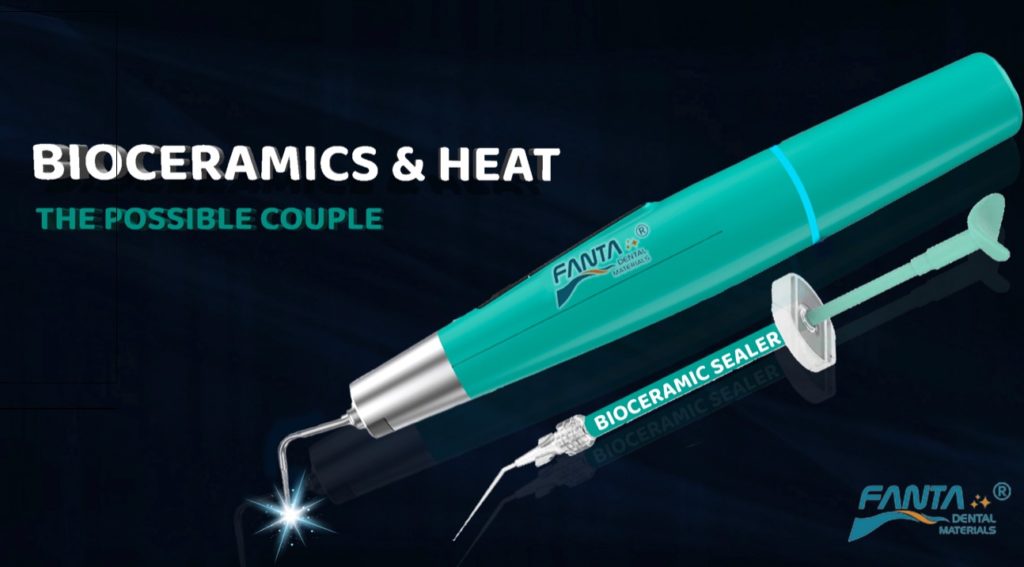
Bioceramics & Heat: The Possible Couple
19/12/2022
Mohamad Zaafrany
Warning: Undefined variable $post in /var/www/vhosts/styleitaliano-endodontics.org/endodontics.styleitaliano.org/wp-content/plugins/oxygen/component-framework/components/classes/code-block.class.php(133) : eval()'d code on line 2
Warning: Attempt to read property "ID" on null in /var/www/vhosts/styleitaliano-endodontics.org/endodontics.styleitaliano.org/wp-content/plugins/oxygen/component-framework/components/classes/code-block.class.php(133) : eval()'d code on line 2
One of the main goals of Endodontic treatment is to prevent reinfection hence come the role of obturation and 3D sealing to root canal system to provide sufficient apical and coronal seal against bacterial re invasion.
Root canal system is so complex, presence of anastomosis, isthmuses and lateral canals exhibit a challenge for the clinician to 3 dimensionally clean and seal the root canal system.
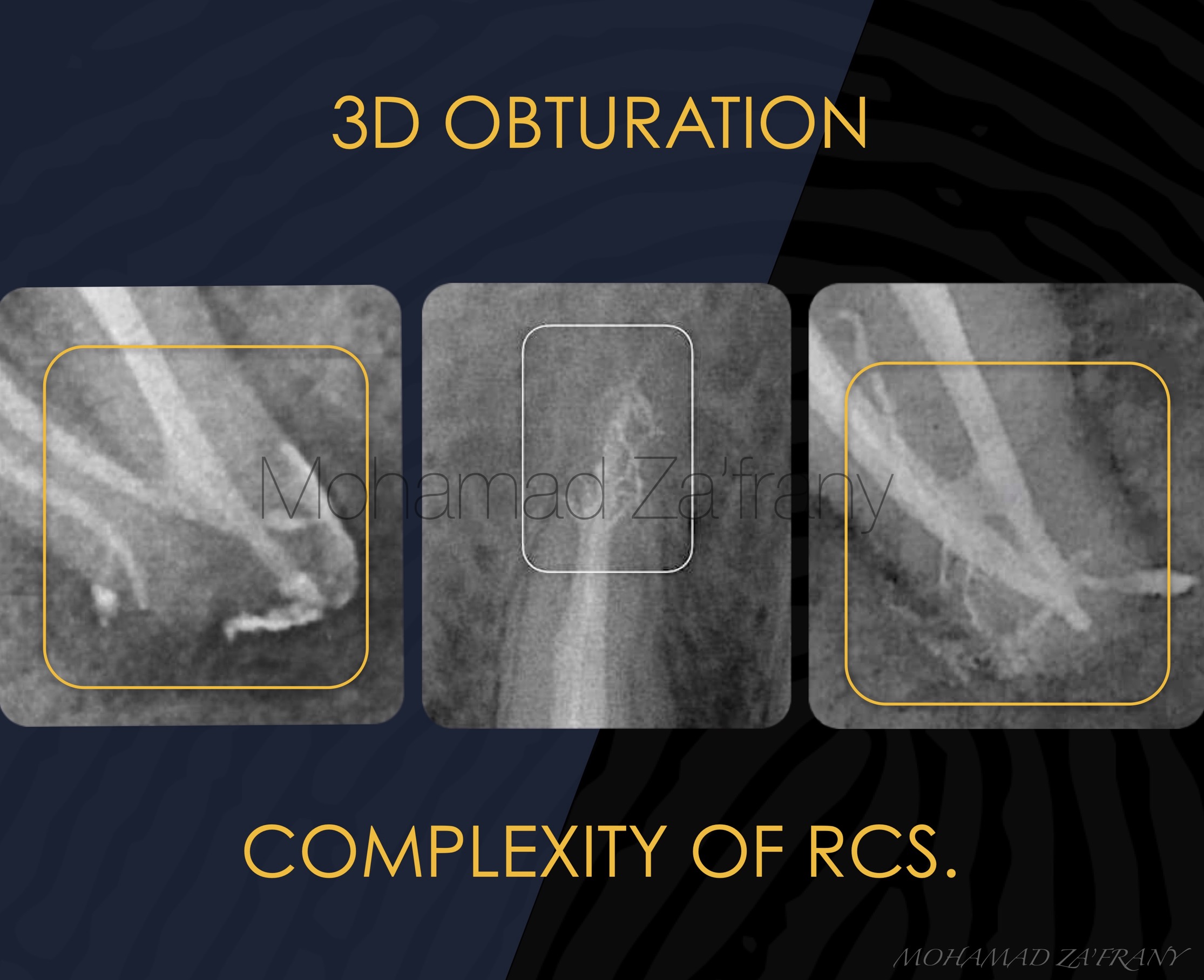
Fig. 1
Complexity of root canal system
Root canal system is so complex, presence of anastomosis, isthmuses and lateral canals exhibit a challenge for the clinician to 3 dimensionally clean and seal the root canal system.
For years clinicians use the Warm vertical compaction”WVC” techniques to get the advantages of consistently dense, stable root canal fillings with more likelihood to fill canal irregularities more effectively than is possible with cold gutta-percha.
With the introduction of Bioceramic sealers the idea of single cone obturation came again on top because of the sealer dependent obturation technique hence getting the advantage of biocompatibility, expansion, being hydrophilic and the antimicrobial effect of the sealer. And many dentists starts to imply the single cone technique with BC in their practice.
But Endodontists still understand the role of hydraulics and packing the spaces for better filling of RCS and because of the sensitivity of BC sealers to be used with the heat of Warm obturation techniques it was critical to the operator to use both together.
We have either to modify the material or the technique.
That’s why today we have heat friendly BC sealers that could accommodate heat up to 250 degrees like BC hi flow from Brasseler and Neoseler from Avalon . And we have Hot modified technique to be safely used with regular BC sealers.
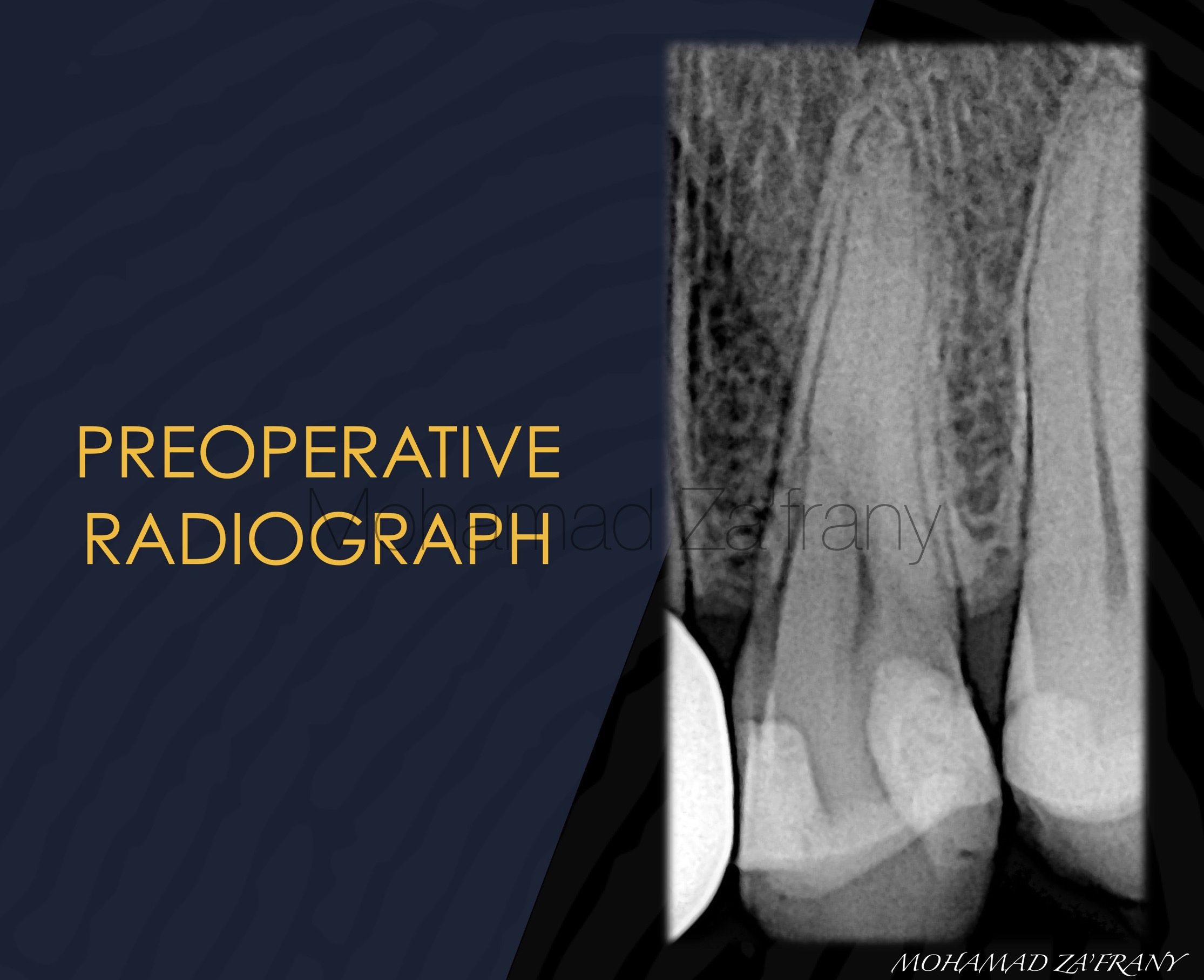
Fig. 2
Here I’m presenting to you a case of premolar with symptoms of irreversible pulpits after providing proximal composite restoration. In this case we used hot modified technique as descried by Alfredo Landolo . in which we decreased the used temperature to 130-150 degree.
Penetration depth reduced to 3 sec instead of 5sec
Also heat carrier tip could be stopped at 6-10 mm from WL rather than conventional 4-6mm.
In this case the new E heater down packing pen from Fanta Co. was used, thanks to the multiple wide range selection of temperature to be used with different warm obturation techniques.
In the video The E heater pen from Fanta is used at temperature of 180 degree for intracranial heating to sodium hypochlorite that increase the removal of debris and smear layer
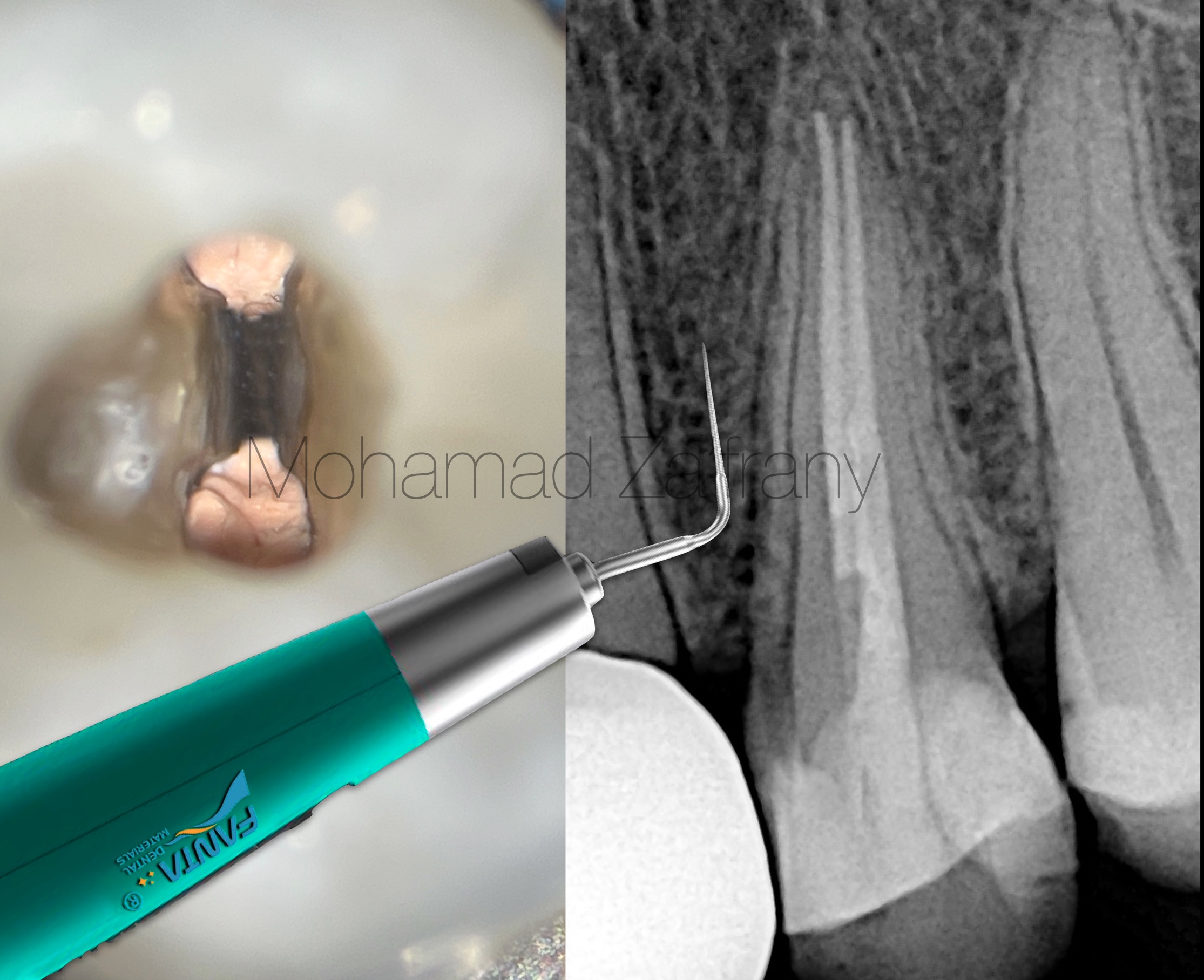
Fig. 3
Clinical photo and radiograph after completion of Obturation in heat modified technique using E-Heater pen from Fanta.
In the video The E heater pen from Fanta is used at temperature of 140 degree for hot modified technique for obturation getting the advantages of the use of heat for better adaptation, filling of irregularities and the advantages of the use of BC sealer
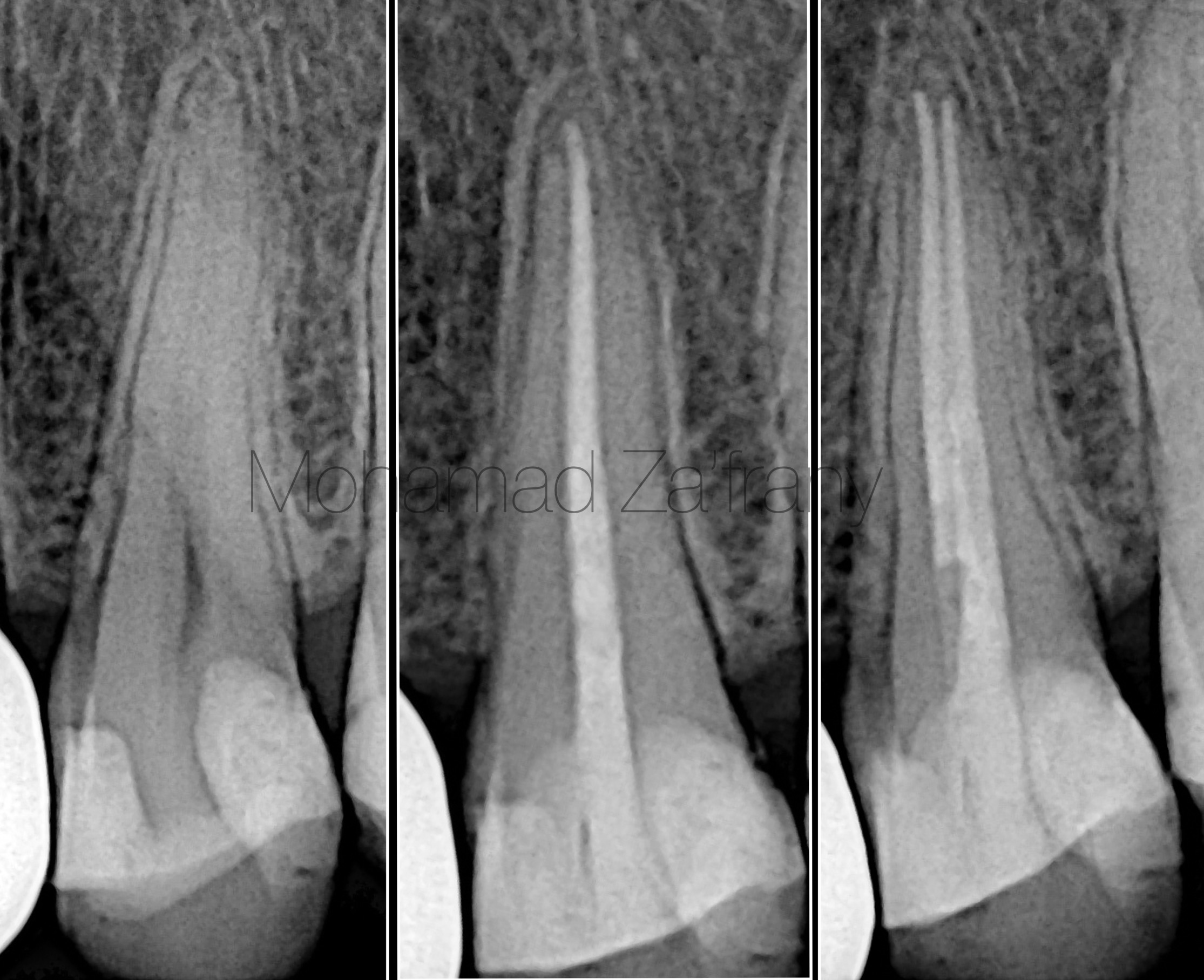
Fig. 4
Radiographic workflow
Conclusions
- Clinicians should understand the nature of complexity of root canal system to be able to 3d clean and 3d fill the entire space to improve the outcome of the treatment.
- Using heat friendly BC sealers or hot modified techniques allow clinicians to get advantages of Warm obturation techniques and properties of BC sealers.
- With the multiple different tip sizes and wide range of temperature in E-Heater pen from Fanta, the pen could be used in various warm obturation techniques even with BC sealers and it could be used for intracanall heating of irrigation with great performance.
Bibliography
Schilder H. Filling root canals in three dimensions. 1967. J Endod 2006;32:281-90.
Influence of Warm Vertical Compaction Technique on Physical Properties of Root Canal Sealers
Wei Qu, DDS, Wei Bai, MD, Yu-Hong Liang, DDS, PhD, and Xue-Jun Gao, DDS, PhD - JOE — Volume 42, Number 12, December 2016
Intracanal heating of sodium hypochlorite: Scanning electron microscope evaluation of root canal walls
Alfredo Iandolo, Massimo Amato and Giuseppe Pantaleo - J Conserv Dent. 2018 Sep-Oct; 21(5): 569–573. doi: 10.4103/JCD.JCD_245_

